Dimethyl Itaconate Attenuates CFA-Induced Inflammatory Pain via the NLRP3/ IL-1β Signaling Pathway
- PMID: 35935847
- PMCID: PMC9353300
- DOI: 10.3389/fphar.2022.938979
Dimethyl Itaconate Attenuates CFA-Induced Inflammatory Pain via the NLRP3/ IL-1β Signaling Pathway
Abstract
Itaconate plays a prominent role in anti-inflammatory effects and has gradually been ushered as a promising drug candidate for treating inflammatory diseases. However, its significance and underlying mechanism for inflammatory pain remain unexplored. In the current study, we investigated the effects and mechanisms of Dimethyl Itaconate (DI, a derivative of itaconate) on Complete Freund's adjuvant (CFA)-induced inflammatory pain in a rodent model. Here, we demonstrated that DI significantly reduced mechanical allodynia and thermal hyperalgesia. The DI-attenuated neuroinflammation was evident with the amelioration of infiltrative macrophages in peripheral sites of the hind paw and the dorsal root ganglion. Concurrently, DI hindered the central microglia activation in the spinal cord. Mechanistically, DI inhibited the expression of pro-inflammatory factors interleukin (IL)-1β and tumor necrosis factor alpha (TNF-α) and upregulated anti-inflammatory factor IL-10. The analgesic mechanism of DI was related to the downregulation of the nod-like receptor protein 3 (NLRP3) inflammasome complex and IL-1β secretion. This study suggested possible novel evidence for prospective itaconate utilization in the management of inflammatory pain.
Keywords: IL-1β; NLRP3 inflammasome complex; dimethyl itaconate; inflammatory pain; macrophages; microglia.
Copyright © 2022 Lin, Ren, Zhu, Dai, Gao, Xia, Cheng, Huang and Yu.
Conflict of interest statement
The authors declare that the research was conducted in the absence of any commercial or financial relationships that could be construed as a potential conflict of interest.
Figures
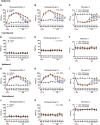
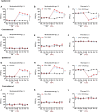
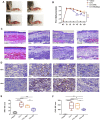
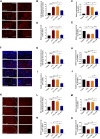

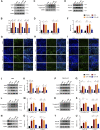

Similar articles
-
Dimethyl itaconate inhibits neuroinflammation to alleviate chronic pain in mice.Neurochem Int. 2022 Mar;154:105296. doi: 10.1016/j.neuint.2022.105296. Epub 2022 Feb 2. Neurochem Int. 2022. PMID: 35121012
-
Irisin alleviates CFA-induced inflammatory pain by modulating macrophage polarization and spinal glial cell activation.Biomed Pharmacother. 2024 Sep;178:117157. doi: 10.1016/j.biopha.2024.117157. Epub 2024 Jul 22. Biomed Pharmacother. 2024. PMID: 39042964
-
Propofol partially attenuates complete freund's adjuvant-induced neuroinflammation through inhibition of the ERK1/2/NF-κB pathway.J Cell Biochem. 2019 Jun;120(6):9400-9408. doi: 10.1002/jcb.28215. Epub 2018 Dec 9. J Cell Biochem. 2019. PMID: 30536812
-
Itaconate: A promising precursor for treatment of neuroinflammation associated depression.Biomed Pharmacother. 2023 Nov;167:115521. doi: 10.1016/j.biopha.2023.115521. Epub 2023 Sep 15. Biomed Pharmacother. 2023. PMID: 37717531 Review.
-
Itaconate family-based host-directed therapeutics for infections.Front Immunol. 2023 May 16;14:1203756. doi: 10.3389/fimmu.2023.1203756. eCollection 2023. Front Immunol. 2023. PMID: 37261340 Free PMC article. Review.
Cited by
-
Trifluoro-Icaritin Ameliorates Neuroinflammation Against Complete Freund's Adjuvant-Induced Microglial Activation by Improving CB2 Receptor-Mediated IL-10/β-endorphin Signaling in the Spinal Cord of Rats.J Neuroimmune Pharmacol. 2024 Oct 10;19(1):53. doi: 10.1007/s11481-024-10152-8. J Neuroimmune Pharmacol. 2024. PMID: 39387998
-
Topiramate inhibits adjuvant-induced chronic orofacial inflammatory allodynia in the rat.Front Pharmacol. 2024 Aug 16;15:1461355. doi: 10.3389/fphar.2024.1461355. eCollection 2024. Front Pharmacol. 2024. PMID: 39221150 Free PMC article.
-
Dimethyl Itaconate Alleviates Escherichia coli-Induced Endometritis Through the Guanosine-CXCL14 Axis via Increasing the Abundance of norank_f_Muribaculaceae.Adv Sci (Weinh). 2025 Jun;12(21):e2414792. doi: 10.1002/advs.202414792. Epub 2025 Apr 14. Adv Sci (Weinh). 2025. PMID: 40227949 Free PMC article.
-
Strong Immune Privileges of MSC and Other Nes-GFP+ Progenitors in Bone Marrow of Transgenic Mice.Immune Netw. 2025 Apr 22;25(3):e20. doi: 10.4110/in.2025.25.e20. eCollection 2025 Jun. Immune Netw. 2025. PMID: 40620418 Free PMC article.
-
Theranostic nanoemulsions suppress macrophage-mediated acute inflammation in rats.J Nanobiotechnology. 2025 Feb 4;23(1):80. doi: 10.1186/s12951-025-03164-w. J Nanobiotechnology. 2025. PMID: 39905487 Free PMC article.
References
LinkOut - more resources
Full Text Sources

